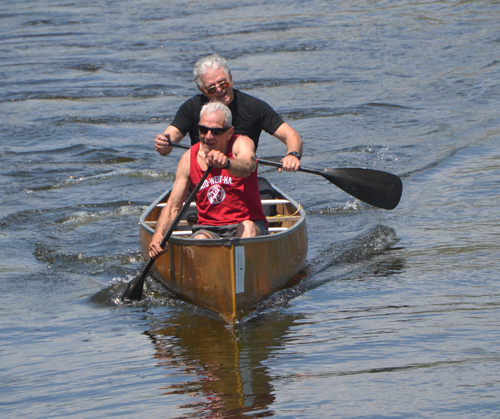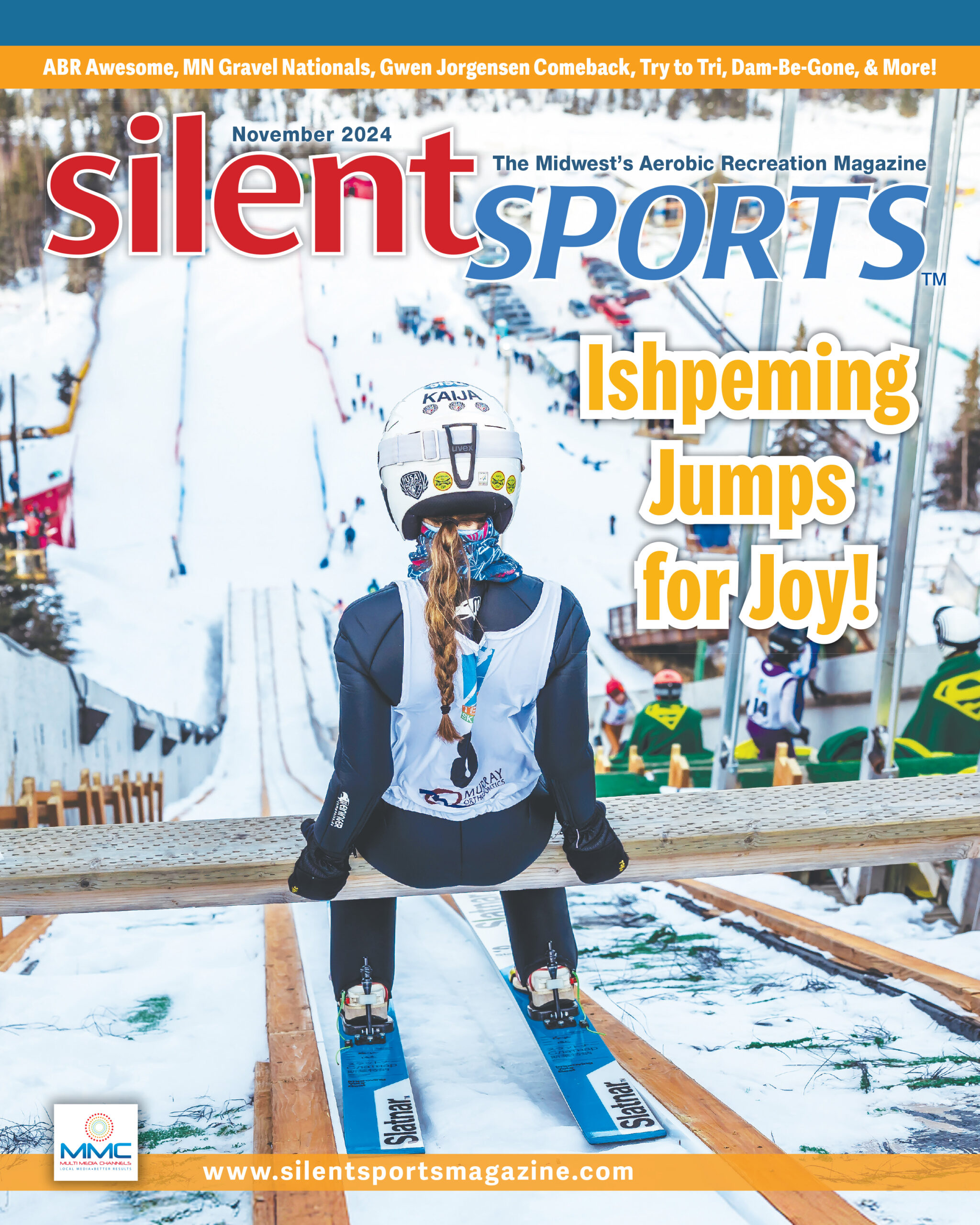A half-century of canoe racing in Manchester

The author and his brother, Steve, have won the race twice. Cyndy Foley photo
Paddling with Dave Foley
In 1967, the Manchester Boat & Canoe Race made its debut as part of this southern Michigan village’s Centennial Celebration. That first year a mix of thirty-one canoes and rowboats started from Fellow’s Bridge and would finish forty to sixty minutes later at the bridge over Manchester’s main street. Among the paddlers was Ken Palken and his 7-year-old son, Lee. The Palkens moved to Indiana and never made it back to the race until this year.
“We heard that this would be the 50th year and we wanted to come back for that,” noted the elder Palken in 2016. “We don’t get into a canoe too often, but Lee and I are looking forward to having some fun in the race today.”
Over the years, the race kept evolving. By 1987, the rowboats were gone and kayaks had joined the field. However, the competing is left to the amateurs; you won’t see those sleek black carbon fiber race canoes flying down the Raisin River. There are a few Kevlar boats, but mostly the folks are paddling all-purpose canoes and kayaks that spend most of the year leaning up against the garage.
We arrive at Fellows Bridge about an hour before the noon start. For my brother Steve, the race is a tradition. He’s done about 35 of them and is always hoping to entice family and friends to join him. This year, in addition to Cyndy and me, his daughter, Jess, and her friend, Marcel, have come to race. For his partner this year, Steve has recruited a member of his book club. Walking around collecting information for this feature I discover probably the majority of paddling teams are made up of family members. A pair of brothers, Ross and Case Kittel, are favored to win. Living just a quarter mile down the road, they’ve literally grown up with the race. “I did my first one when I was four and Case started when he was five,” recalled Ross. “Mom or Dad were our partners. They’re racing today.”
The air temp hovers in the 30s, and occasionally a wave of sleet showers us. Even the old-timers are saying this might be the coldest race ever. I’m wearing my down jacket, although that will be ditched before we get in the canoe. I’m hoping adrenalin and fast paddling will keep me warm once we’re in the river.
If you can call it a canoe or kayak, you can race it on the Raisin. Competitors await the start of the 50th annual.
At noon, the first canoes are launched. No mass start for this race, the Raisin River is only about thirty feet wide and loaded with woody debris. “Competitors go in first,” says the Kiwanis member who’s acting as head official. “Then the lolly-gaggers can follow.”
We’re probably about the tenth boat in the water out of a field of around seventy-five. As we pass under a rope stretched over the river, the timer waves and we dig in. Crossing under Fellows Bridge, we cut to the inside to avoid a canoe that’s caught in an eddy in the bend. The paddlers seem unsure how to get out of the swirling water. Recent rains have colored the stream, hiding underwater obstacles. Avoiding snags is more about reading the river then actually seeing the hazards. I’m mixing in a variety of draws and pry strokes to keep the boat from getting hung up. I lose my hat when it’s snagged from my head as we shoot under low-hanging branches,
Midway through the race, a culvert appears. Passing through looks tight and I’m afraid of getting stuck inside the pipe so we scramble out of the boat and haul it over the road. As we approach town, the river widens and slows. Seeing canoes ahead of us, Cyndy and I pick up our cadence and close the gap. We hit the final straightaway in the wake a canoe, make a final sprint and beat them to the finish banner. The crowd amassed on the Main Street bridge cheers. They’ll be there for the next two hours shouting encouragement to every boat that comes down the river.
A troop of Boy Scouts is there to help us onto the dock and haul our canoe out of the river. Even on this cold day, it seems like much of the village population has come to watch the race and there are volunteers everywhere, helping with the portage, working on race results and offering refreshments. It’s obvious that Manchester is proud of its canoe race.
Although theyre paddling hard in the Manchester race, youll see lots of smiles. Dave Foley photo
Until Steve’s canoe arrives and we can get dry clothes from his car, we’re stuck in our clammy-wet race shirts. The historical museum, which has its grand opening today, becomes our warm refuge. They’ve got drinks and refreshments as well as easels filled with clippings and photos depicting the race’s history. I see a photo of myself and my son from when we raced in 1987, which reminds me of a unique feature of the race. You can run it twice. In 1987, I paddled it first with Steve in the men’s category, then hurried back to the start and paddled in the adult/child division with my nine year old son, Ben. This year, one run down the river is enough for me.
The race finishes at the Mill Pond in downtown Manchester. Dave Foley photo
Soon we meet up with the rest of our canoe group, get into dry clothes and return to the finish area to check the leader board. The Kittel brothers’ 33:56 is the best time of the day. Cyndy and I are second in 35:05. We’re also the oldest team with our combined ages totaling 137 years.
This year will be the 51st Manchester Canoe Race. We’ve already marked the third Sunday in May on our calendar for another run down the Raisin River.







